Zero2Automated Biweekly Challenge: Oski Stealer

Table of Contents
Introduction #
I’m having a blast with the Zero2Automated course so far, the depth of the content is great. At the end of this course, there are four challenges that one can choose to analyze further to really deepen their understanding of reversing and automation in particular. This means that these challenges require you to analyze the binary and the string decryption routines, and to write a script to automatically extract / decrypt the data by reproducing the algorithms in Python for instance. In this post I go over how I analyzed the Oski Stealer to uncover the string decryption routines and the script I wrote to decrypt the encrypted data in the binary.
The Oski Stealer sample #
| File name | triage_dropped_file |
|---|---|
| SHA256 | 707adf85c61f5029e14aa27791010f2959e70c0fee182fe968d2eb7f2991797b |
| File size | 442'368 bytes |
| Mime type | application/x-dosexec |
| Packed | Yes |
Unpacking #
As a first analysis step, the sample is loaded into PEStudio. Besides
that it is a .NET library, we observe that there are many many imports with
garbled names. Knowing that the Oski Stealer is written in C++, we know that it is likely packed,
or that it is at the very least loaded by another .NET binary.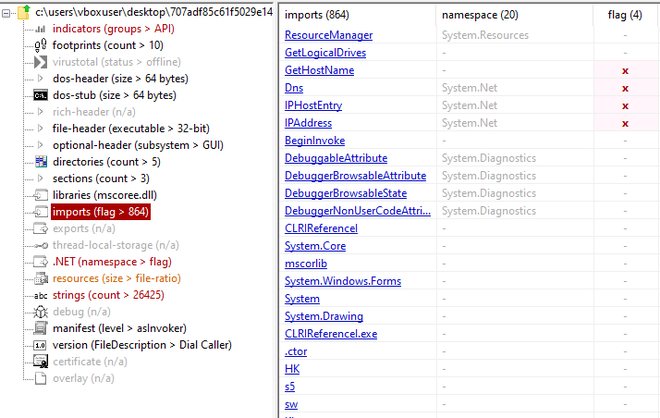



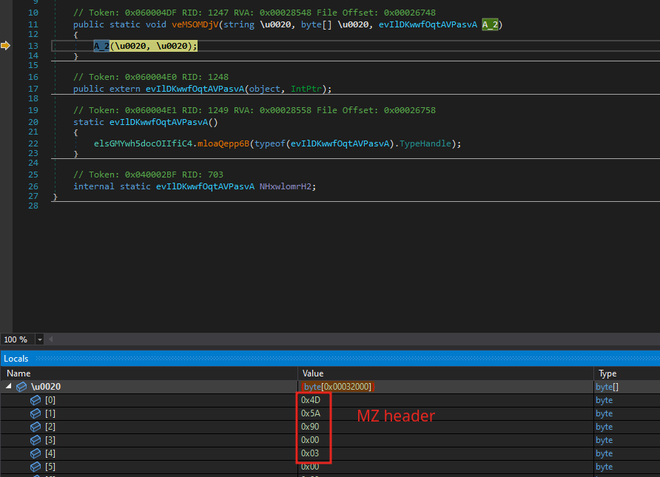
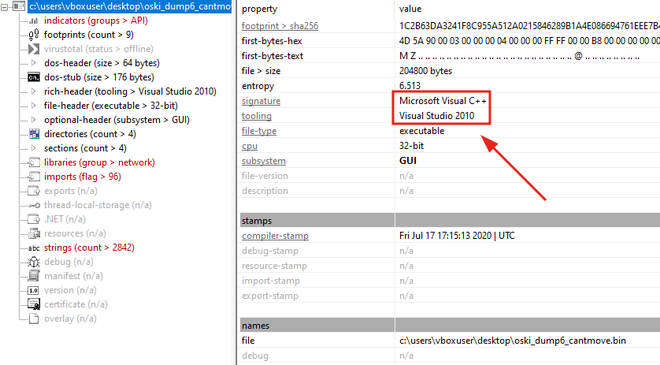
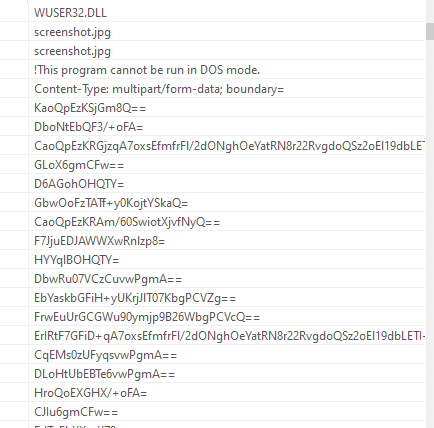
At this point, we’re pretty confident that this is the unpacked Oski stealer binary.
Analysis #
Loading this binary into Ghidra, we observe an interesting routine in the entry function ___tmainCRTStartup.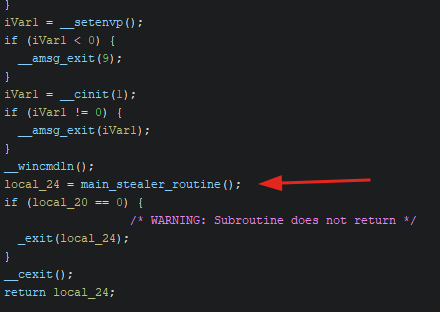
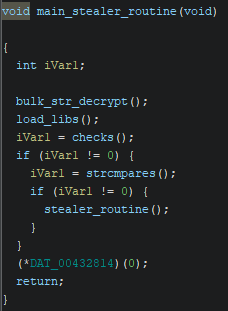
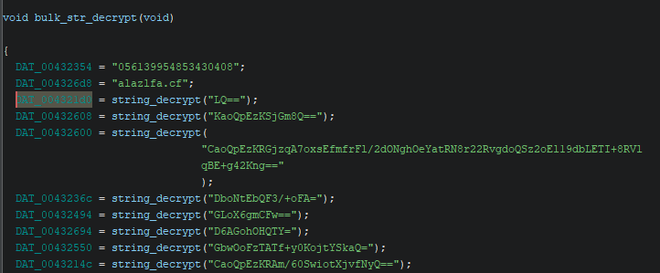
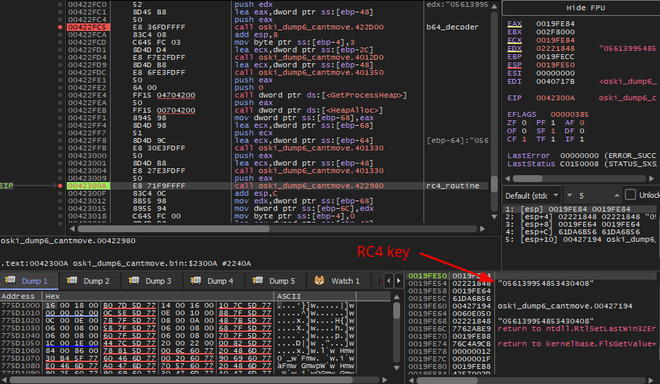
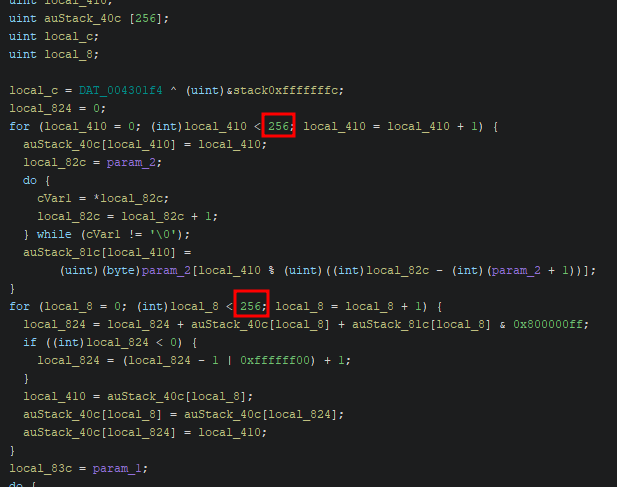
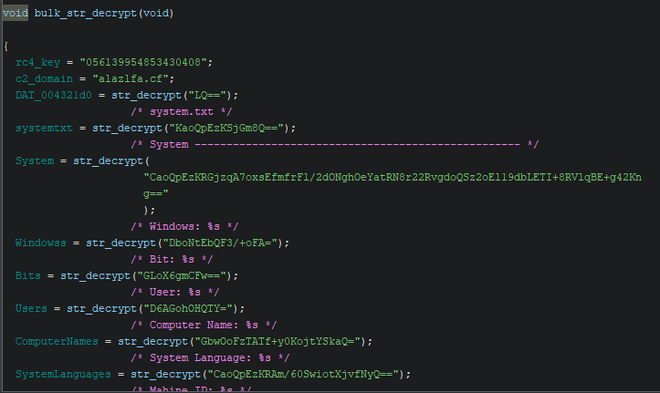
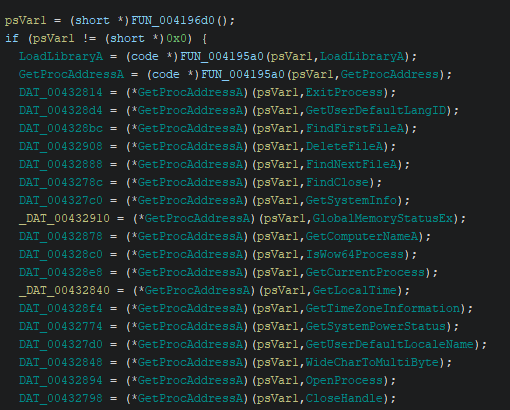
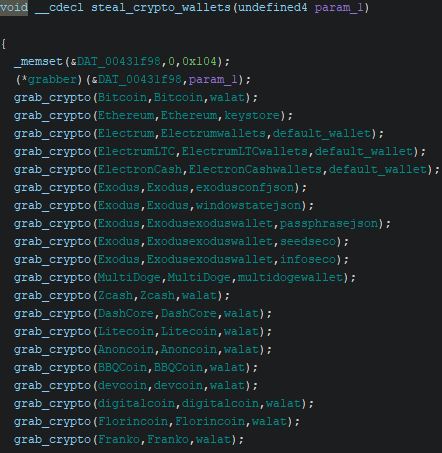
The stealer is actually quite simple and easy to reverse once the strings are decrypted.
String Decryption Script #
The observed decryption routines were turned into the following code which adds labels and EOl comments at the right points in the code. It is a quick and dirty script, but it gets the job done.
import base64, re
from Crypto.Cipher import ARC4
from ghidra.program.model.symbol import SourceType
key = b"056139954853430408"
name = "str_decrypt" # originally FUN_00422f70
# Find the function calls to the "str_decrypt" routine
funcs = getGlobalFunctions(name)
for func in funcs:
entryPoint = func.getEntryPoint()
# iterate over the to-references
references = getReferencesTo(entryPoint)
for ref in references:
lst = currentProgram().getListing()
addr = ref.getFromAddress()
instr = lst.getInstructionAt(addr).getPrevious()
mov_instr = lst.getInstructionAt(addr).getNext().getNext()
# get data MOV instruction address for renaming
mov_data_addr = toAddr(str(mov_instr).split(",")[0].split(" ")[1].replace("[", "").replace("]",""))
# get data address for EOL comments
data_addr = toAddr(str(instr).split(" ")[1])
data = lst.getDataAt(data_addr)
mov_data = lst.getDataAt(mov_data_addr)
val = data.getValue()
try:
# RC4 decrypt data
b64dec = base64.b64decode(val)
cipher = ARC4.new(key)
dec = cipher.decrypt(b64dec).decode("ascii")
# clean string from special chars, Ghidra doesn't like them
clean = re.sub('\W+','', dec)
# set DAT_ label to the cleaned string
mov_data.getPrimarySymbol().setName(clean, SourceType.USER_DEFINED)
# add EOL comment with original, uncleaned string
setEOLComment(addr, dec)
except:
pass
Conclusion #
This was a fun piece of malware to reverse. I had some trouble unpacking the sample at first because I felt that I was repeatedly dumping the same binary, but eventually I dumped out the right one. Reversing the actual unpacked sample luckily wasn’t that hard and it was a lot of fun to come up with a deobfuscation script for this stealer.